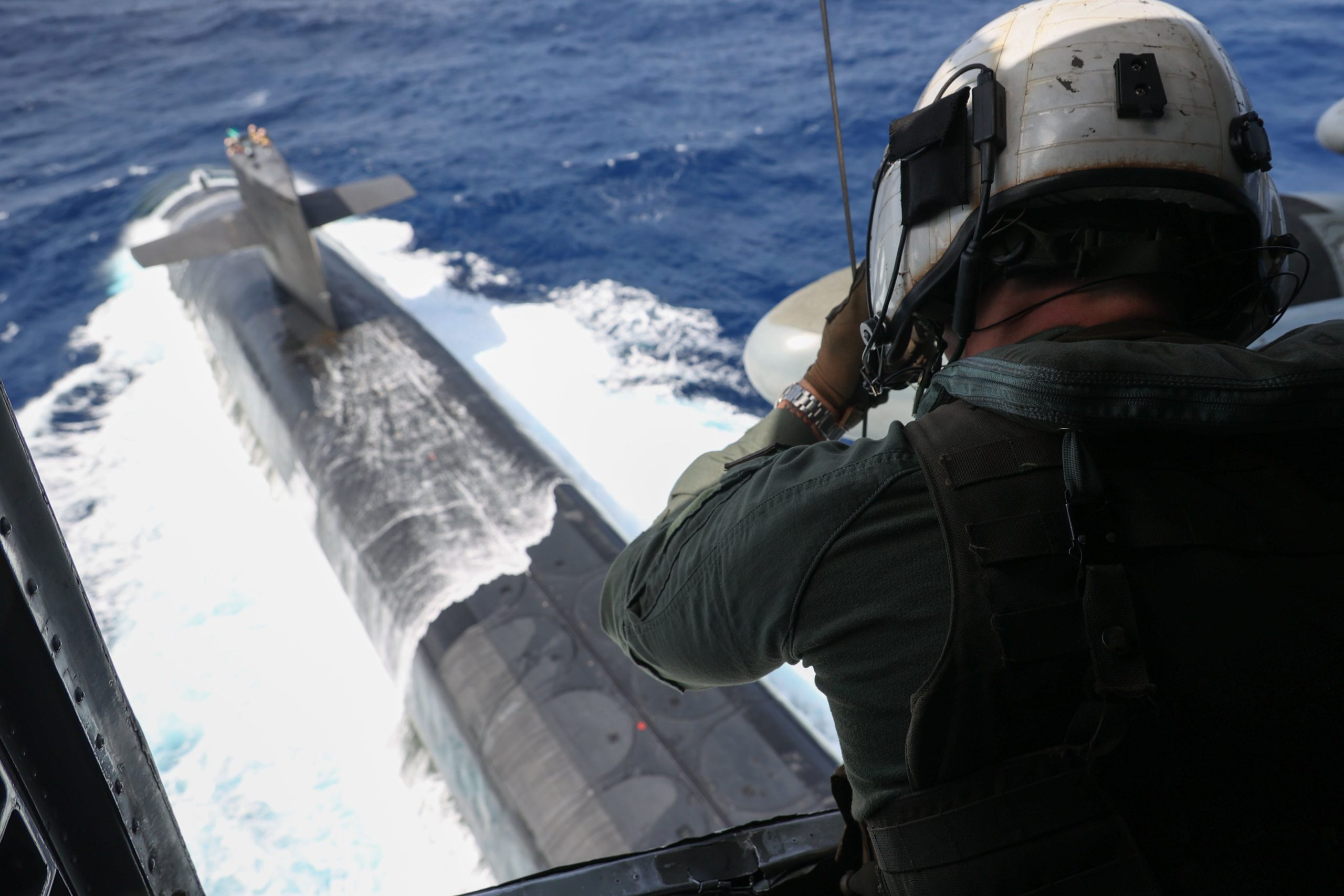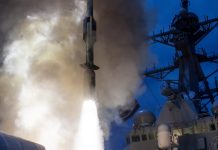By Ritu Sharma
Tensions are rising in the Indo-Pacific region. It remains to be seen if the rise of China will be as peaceful as the country’s leadership claims.
It is, however, a fact that China is becoming assertive. In anticipation of a conflict in the region, the elite US Marine Corps are figuring out how to keep its teams light and mobile while hopping from island to island in the Indo-Pacific region.
Ukraine Wobbles As Its ‘Game Changing’ Weapons – Leopard MBTs, Storm Shadow Missiles, HIMARS – Fail To Change The Game
The elite fighting unit that prides itself in being the “constant amidst the uncertain” will adapt its warfighting functions to gain an edge over “peer threats.” “…With the support of the Office of the Under Secretary of Defense for Research and Engineering, we will begin the Long-Range Attack Munition project to rapidly develop and field a low-cost, air-launched family of loitering, swarming munitions,” the 2023 annual status update on the Force Design 2030.
Loitering munition is an aerial weapon system in which the ammunition can loiter (wait passively) around the target area for some time and attack only once a target is located.
The loitering munition would replace the air-to-ground AGM-114 Hellfire missiles known for their anti-armor and precision strikes. Against high-value targets, these missiles are weapons of choice.
Drawing lessons from the conflict in Ukraine, where low-cost unmanned aerial vehicles have been able to counter the expensive long-range missiles from Russia, the Marine Corps wants to adapt itself and “focus on counter-UAS and air and missile defense and investments in precision fires to support distributed operations and maneuver.”
In a statement to the press, Brig. Gen. Stephen Lightfoot, Director of the Capabilities Development Directorate, said that the Hellfire missile could range 8 kilometers depending on the helicopter’s altitude.
“That’s great in [Operation Iraqi Freedom], [Operation Enduring Freedom], and areas we’ve been fighting in for years. But when you move over to the Indo-Pacific and some of the distances we’re talking about, 8 kilometers doesn’t do as much as you’d want,” Lightfoot said. The service is already experimenting with these munitions, and they will be field ready within a few years.
The Marine Corps got its H-1 attack helicopter in 2022 and will remain in service for decades. However, the force must also incorporate evolutionary warfighting technology.
These capabilities span all warfighting functions that entail the Unmanned Logistics System- Aerial, the Marine Air Defense Integrated System (MADIS), and the Navy-Marine Expeditionary Ship Interdiction System.
Mission Indo-Pacific For US Marine Corps
The NMESIS is an anti-ship missile system developed for the US Marine Corps (USMC) to support land-to-sea attacks performed by the US Navy.
The Marine Corps is testing a new ground-based air defense (GBAD) capability called Light Marine Air-Defence Integrated System (LMADIS). The new LMADIS capability is designed to defeat and neutralize the enemy’s uncrewed aircraft systems (UAS) and minimize airborne threats by disrupting available electronic signals between the UAS and its operator.
The Corps is learning to supply its forward forces, who will operate under the barrage of enemy-guided missiles. The service is now working to operate in the South China Sea in the event of a war with China.
“We are talking about the entire marine littoral regiment working at advanced bases and other dispersed sites across the Indo-Pacific. From a logistics point of view, that presents a challenge on how we sustain that inside force,” Col. Aaron Angell, the executive assistant for Installations and Logistics, told reporters earlier.
The US has increased its engagement in the Indo-Pacific. It will conduct its first coastguard exercise with the Philippines in the South China Sea. Jostling with China to increase its influence in the Pacific, the US signed a bilateral defense cooperation agreement with Papua New Guinea. NATO is going to open its first Liasoning office in Japan next year.
“It’s one thing where we have some of the larger ships intended to move from the United States into a theater of operations. It’s another thing to sustain that force in [the] maritime environment,” Angell said. “When you think of a place like the Philippines with over 1000 islands in the archipelago, how do we move sustainment, food, ammunition, fuels, people, medical supplies, and medical capability amongst those islands?”
To achieve this, the forces are looking at procuring a Medium Landing Ship (LSM). “Other projects include developing a common launcher for the family of ground-launched loitering munitions and testing a low-cost, hypersonic booster in a form factor the Marine Corps can logistically support in a contested environment. We are also investing in our first Stern Landing Vessel prototypes to bridge the gap until additional resources are applied to Medium Landing Ship (LSM) procurement,” the Annual Status report read.
The cost of a substantial amphibious warship has also been detrimental to its procurement.
To get after this problem, the Marine Corps is assessing what other platforms, like Expeditionary Fast Transport ships, and deployment models it could use to fulfill the missions typically performed by amphibious ships.
Soldiers with the 3rd Marine Littoral Regiment, 3rd Marine Division in California, tested a Tactical Resupply Unmanned Aircraft System (TRUAS) quad-copter earlier this month in a training exercise. The Marines are also looking for their unmanned surface ship that can do resupply.

The force has also learned a big lesson from the Ukraine-Russia war. The 2nd Marine Aircraft Wing had created a multi-function air operations center (MAOC) in Lithuania to work with NATO. The Marine Corps see this to be a useful concept in the Indo-Pacific.
“Recent exercises in US Indo-Pacific Command demonstrated the MAOC’s ability to improve the common tactical picture for a carrier strike group and provided visible evidence of Combined Joint All Domain Command and Control (CJADC2) in practice,” the report reads.
The MAOC’s mission is to generate an integrated tactical picture of the operating environment to control aircraft and missiles, enable decision superiority, gain and maintain custody of adversary targets, hold targets at risk, and promote engagement of targets in all domains in support of Marine Corps, naval, joint, ally, and partner forces.
If the past month of confrontation between the US and Chinese forces is any indication, the Marines must prepare for their toughest assignment in the coming days.
- Ritu Sharma has written on defense and foreign affairs for over a decade. She holds a Master’s Degree in Conflict Studies and Management of Peace from the University of Erfurt, Germany. Her areas of interest include Asia-Pacific, the South China Sea, and Aviation history.
- She can be reached at ritu.sharma (at) mail.com





